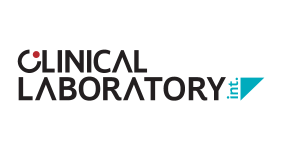Blood management during the COVID-19 pandemic
Deborah Tolich, DNP, MSN, RN, Moises Auron, MD, Kelly McCoy, BSN, RN, Marni Dargis, RN and NurJehan Quraishy, MD, Cleveland Clinic | Jan 05, 2021
The worldwide COVID-19 pandemic has required healthcare systems to implement strategies for effective healthcare delivery while managing blood supply chain disruptions and shortages created by infection-limiting practices that have reduced blood donations. At Cleveland Clinic, we have made multiple synchronous efforts: a call for increased blood collection, alignment of efforts among transfusion medicine departments (blood banks), enhanced monitoring and triage of blood product use, and increased education on patient blood management practices regarding blood utilization and anemia management. In addition, we created an algorithm to assess anemia risks in patients whose elective surgery was cancelled to optimize preoperative hemoglobin levels.
Introduction
Related: Evolution of blood transfusion medicine
The worldwide COVID-19 pandemic has created a need for healthcare providers to respond, innovate, and adapt quickly to address the continued demand for emergency care and necessary healthcare services amid this pandemic. Thus, healthcare systems have had to determine how best to care for patients, keep caregivers safe, and manage supply chain disruptions and shortages, including shortages in blood products.
In March 2020, states began issuing social distancing guidelines and escalated school and business closures. In response, healthcare facilities cancelled all elective surgical procedures and nonessential care. These measures also caused cancellation of blood drives and reduced the number of blood donors who could be at a collection site, which severely affected the availability of blood products. Blood centers and hospitals have had to collaborate to ensure continued blood collections.
Related: Experts underline need for early detection of blood cancers in UAE
At the start of the COVID-19 pandemic in Ohio, blood suppliers for the Cleveland Clinic informed us of the potential for blood shortages and a possible 25% cutback of standard inventory orders, creating a need to adjust inventory and blood utilization. Blood utilization services include transfusion medicine (blood bank) and patient blood management (PBM) departments. Plans were instituted to actively monitor and triage blood product orders. Electronic health record blood orders were modified to enhance and facilitate triaging efforts. PBM amplified its educational efforts regarding restrictive blood utilization and anemia management. In addition, PBM took a proactive approach in reviewing cancelled elective surgical cases to identify opportunities for preoperative hemoglobin optimization once these surgeries were restarted.
Background on patient blood management
PBM practices have existed for decades, but have not been fully integrated as a universal standard of care. PBM is defined as an evidence-based medical and surgical approach to minimize the need for and use of blood transfusion in patients as a means to improve their clinical outcomes. It encompasses a comprehensive integration of a patient-centric, multidisciplinary standard of care centralized on blood health, which involves all functions of maintaining blood volume, anemia management, coagulation management, and surgical technique, not just blood transfusion therapy.
To achieve optimal patient outcomes, PBM implements a variety of treatment strategies to minimize or reduce the use of blood products as well as decrease overall healthcare costs. The practice and standards of PBM are universal across specialties as well as inpatient, outpatient, surgical, and medical disciplines.
The pillars of PBM prove valuable in both normal daily patient care as well as during a global pandemic. They focus on optimizing hemoglobin values, minimizing blood losses (eg, frequent phlebotomy, intra operative), managing coagulopathy, and enhancing tolerance to anemia.
Practitioners of PBM consistently consider the hypothetical situation of caring for patients without the availability of blood products when describing its relevance and value. The US blood supply depends on volunteer donors. The stay-at-home orders created unprecedented cancellations of blood drives, placing the blood supply at risk for shortages. Blood suppliers began notifying hospitals of these shortages, which led to preparations and actions to address the shortages while maintaining care delivery.
Patient blood management and COVID-19: Cleveland Clinic experience
The COVID-19 pandemic highlighted the need for PBM guidelines to be mainstream practice. First, there is the immediate risk that blood shortages impose on acutely ill patients. Second, there is the surge of need for innovation in delivery of PBM services given new opportunities to optimize patients such as after cancellation of elective surgeries.
In the event of blood shortage, the most meaningful areas of concern are the decreased availability of O-negative red blood cells (RBCs) and platelets. These require a well-structured and formal system that triages orders for blood products to ensure allocation to patients at greatest need. This system needs to outline specific triaging criteria as well as implementing workflows that can be adapted for each individual organization.
At Cleveland Clinic, the following efforts occurred simultaneously:
- Transfusion medicine established guidelines for issuing all Rh (D)-negative RBC units, not just O-negative, and issuing Rh (D)-negative platelets. Transfusion medicine had a well-established process in place for triaging all platelets when the inventory fell below a prescribed level. In addition, transfusion medicine personnel alerted institutes to the potential for blood shortages and the plans to curtail blood use.
- PBM implemented guidelines for RBC use and anemia management. These guidelines strongly support a consistent blood management strategy regardless of blood product supply. Restrictive trigger and target thresholds are supported by evidence-based literature.
Anemia management is a vital pillar of PBM. It is not uncommon for our PBM program to have presurgical referrals of patients with a longstanding history of moderate anemia, which may have not been formally addressed. The assessment of anemia focuses on immediate hematinic supplementation, especially parenteral iron, as iron deficiency is the most common hematinic deficiency, and noncorrected preoperative iron deficiency has been strongly associated with poor perioperative patient outcomes.
PBM personnel worked collaboratively with pharmacy to ensure availability of intravenous iron formulations and monitored the operational aspects of infusion centers that could potentially disrupt the ability to treat patients, such as ease of access and appointment availability. In addition, to minimize the risk of virus exposure, more patients were prescribed oral iron formulations to help them avoid visits to infusion centers, with follow up on tolerance and clinical response. We advocate administering oral iron every other day in a single nighttime dose to maximize enteral absorption.
In normal operations, our PBM program has a referral system for preoperative anemia management. However, the cancellation of elective surgeries and transition to virtual patient visits decreased referrals by 70% during April and May 2020. The PBM team discussed the best approach to continue anemia care for patients whose surgeries were postponed and created a workflow management plan for assessing these cases. Surgical services were notified that the PBM team would assess these patients without the need for a formal referral.
This process provides us with additional time to optimize patients’ hemoglobin values, time that was not previously available. Once regular surgical services are restored, patients will be re-screened for anemia, including measurement of iron stores.
Efforts in the inpatient and surgical arena have not been changed. There is still intraoperative optimization of coagulation using monitoring with thromboelastography, use of tranexamic acid, as well as cell-saver use. For critical care patients, the current approaches support restrictive over liberal fluid management, reinforcing the use of a restrictive transfusion approach to minimize the risk of transfusion-associated circulatory overload.
Impact of COVID-19 on blood donations
The COVID-19 pandemic has had a major impact on blood donations, both in cancellation of blood drives and in social distancing rules that affect the number of donors allowed at blood drives and blood centers. Hospitals, such as ours, continue to collaborate with blood centers to hold blood drives in large spaces to minimize donor contact and maximize collections. The criteria for regular blood donations remained the same until the Food and Drug Administration (FDA), in an effort to increase blood donations, modified some of their more stringent criteria. For example, the deferral period for accidental needle stick or a blood transfusion is now 3 months instead of the previous 12 months. Individuals diagnosed with COVID-19 (symptomatic or asymptomatic) and those suspected of having COVID-19 should not donate for at least 14 days after complete resolution of symptoms or the date of the positive diagnostic test, whichever is longer. Blood centers may be more stringent, so blood donors need to register on-line with the blood collection facility to determine eligibility.
Convalescent plasma utilization for COVID-19 survivors
Patients who have recovered from COVID-19 have helped patients with COVID-19 by donating plasma. This plasma, called COVID-19 convalescent plasma (CCP), is considered an investigational new drug by the FDA and can only be administered under an approved Institutional Review Board (IRB). The FDA has introduced two IRBs, an emergency investigational new drug, which requires FDA registration for each patient, and an extended access program under the Mayo Clinic IRB, which allows registered hospitals to request CCP for any qualified patient. The FDA also approves randomized controlled trials using CCP.
Hospitals must place orders for CCP through their blood banks, which then request the plasma from their blood suppliers. Blood suppliers use apheresis machines to collect CCP from qualified blood donors, which has resulted in a balancing act between collection of apheresis platelets and CCP, both of which are collected on the same apheresis instruments.
Patient blood management and COVID-19: What happens next?
PBM practices must continue reinforcing best practices for patient-centric anemia optimization as well as decreasing the risk for blood losses. There must be stringent criteria to triage blood utilization and pursue parsimonious transfusion practices. Among patients with COVID-19, there should be growing evidence on best ways to manage anemia, ideally with a nontransfusional approach, especially as fluid administration strategies are focusing on a restrictive approach, especially among critically ill patients.
The duration of the pandemic is still unknown and the challenges for blood availability will remain present for an unknown duration. Efforts to correct anemia in the general population as well as implementation of safe blood drive protocols must remain in place, aiming to mitigate the risk of viral exposure.
Conclusions
Pandemics and active crises act as a catalyst for innovation and implementation of novel strategies to overcome barriers for effective healthcare delivery. Blood management also is affected as it plays a crucial role for enhanced patient optimization, especially before surgical interventions. Clinicians must balance the need to optimize anemia while minimizing the risk for patient blood loss in order to mitigate the need for blood transfusion. In our experience, blood use by patients with COVID-19 is no different from other patients. Also of note, there have been no documented cases of transfusion-transmitted respiratory viruses, such as the coronaviruses, including SARS-CoV-2.
Source: Omnia Health Insights










































































